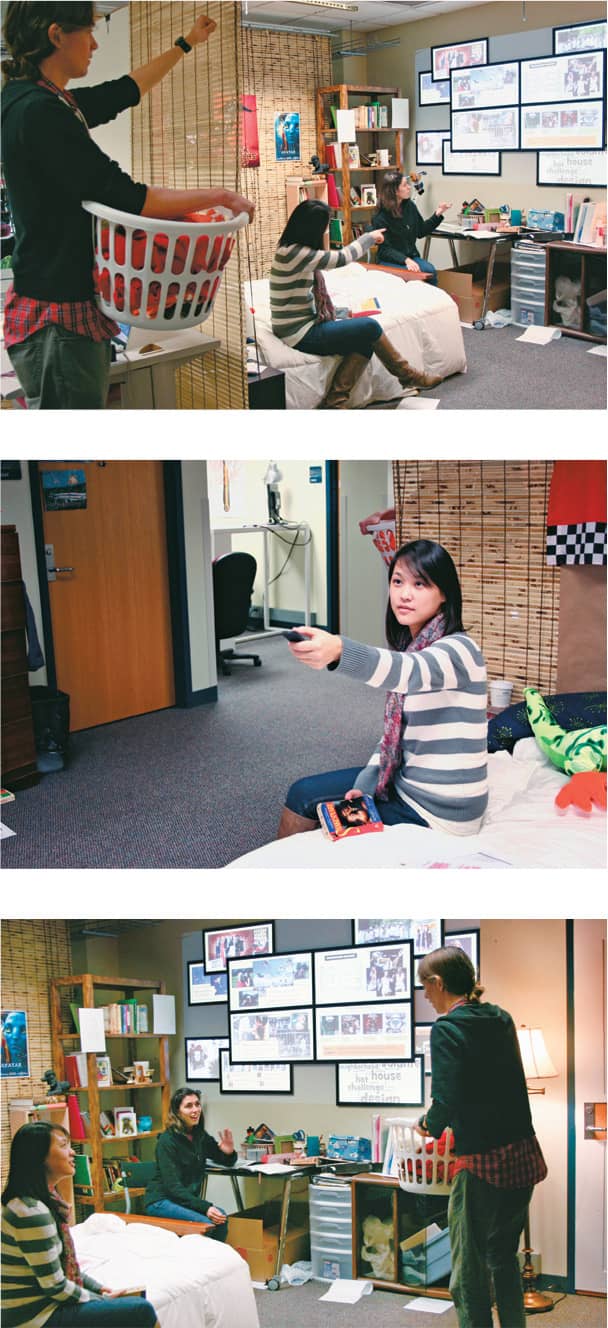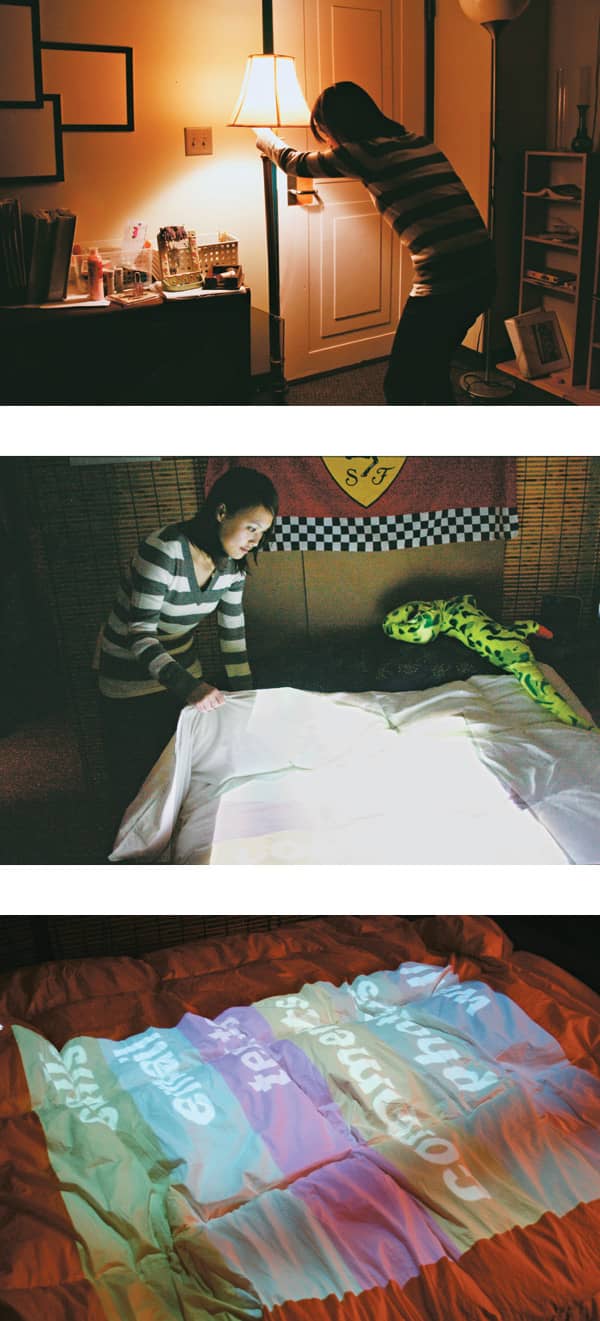RESEARCH METHOD • SYNTHESIS / ANALYSIS TECHNIQUE
79 Speed Dating

When people compare multiple design concepts in quick succession, design teams can learn how people react to new technology while also taking into account existing contextual and social factors.
Speed dating as a research method is inspired by the framework of its dating-scene namesake, but instead of people, researchers rapidly “speed date” design opportunities with potential users. The power of speed dating lies in exposing people to future design ideas via storyboards and simulated environments before any expensive technical prototypes are built. An overview of the speed dating process is as follows:1
Conduct contextual field research. Use methods such as interviews, role-playing, artifact analysis, directed storytelling, diary studies, and cultural probes to understand the people for whom you are designing.2 Analysis efforts should focus on aligning the observed and verbalized needs of the participants, so the team can identify opportunities where people demonstrate and articulate a need.
Create storyboards for each scenario. Design storyboards to elicit an emotional, empathic reaction to the characters so that participants can easily identify with them. Focus scenarios on the specific needs uncovered by research, and show how each potential design would address the need. As with traditional scenarios, the details of the technology itself should be downplayed.
“Speed date” storyboards in a session. Each storyboard should be presented to a group of people in serial fashion, and then followed by a focus question to help design teams understand what is in the users’ minds. At the end of the session, users rank how accurately the storyboards represent their needs, as well as the effectiveness of the proposed technology/solution under evaluation.
Reflect and discuss. Refocus conversations on the needs that were expressed in both the field research and the storyboard sessions. Instead of spending time ranking and prioritizing existing concepts, the team should use this time to articulate misunderstandings, refine scenarios, and consider new design opportunities.
Construct a simulated environment. User enactments in a simulated space allow people to act out a role from the revised scenarios. Over the course of several acted-out scenarios, the team can observe users dealing with specific problems in context to how they could play out in real life.
Use speed dating when exploring environments and social contexts that are not readily available (e.g., homes with ubiquitous computing).3 The method can uncover risk factors across a series of related enactments, and focus design teams’ efforts on understanding user needs before spending time and effort vetting and building expensive technological solutions.
1. Researchers Scott Davidoff, Min Kyung Lee, Anind K. Dey, and John Zimmerman at the Carnegie Mellon Human Computer Interaction Institute and School of Design first developed the speed dating method in 2007 while exploring opportunities for ubiquitous computing in smart homes. During their study, they used speed dating to explore over 100 concepts and prototype 27 variations over two weeks. The results helped them to pinpoint “showstopper” issues before costly technical prototypes were built, and also uncovered that certain user needs they once considered noncritical turned out to be promising new opportunities for innovation. See:
Davidoff, Scott, Min Kyung Lee, Anind K. Dey, and John Zimmerman. “Rapidly Exploring Application Design Through Speed Dating.” Proceedings of 9th International Conference on Ubiquitous Computing UbiComp ’07, 2007.
2. Davidoff, Scott, Min Kyung Lee, Charles Yiu, John Zimmerman, and Anind K. Dey. “Principles of Smart Home Control.” Proceedings of UbiComp ’06, 2006.
3. See note 1 above.
4. Odom, Will, John Zimmerman, and Jodi Forlizzi. “Teenagers and Their Virtual Possessions: Design Opportunities and Issues” Proceedings of SIGCHI Conference on Human Factors in Computing Systems, 2011.
ENACTMENT ONE: THE PARENT BUTTON
What kinds of and how much virtual information can be comfortably displayed for parents to see?

ENACTMENT TWO: MULTIPLE SELF-PRESENTATIONS
How would your different online personas look if they were all visible in one place?

ENACTMENT THREE: BEDROOM QUILT
What are the boundaries and values of having personal information wrapped around you while you were sleeping?

Speed dating allows for structured engagements across multiple scenarios. The method creates new understanding about the potential design opportunities that should be more fully considered, as well as the problem areas that should be avoided, within the design space. Above, researchers designed and constructed a teenager’s bedroom environment to explore several enactments regarding how teenagers interact with their virtual possessions in their bedrooms.4 By acting out each scenario, design teams can understand the overlaps between scenarios, and what makes a type of product presence or intervention acceptable (or not) or desirable (or not).
